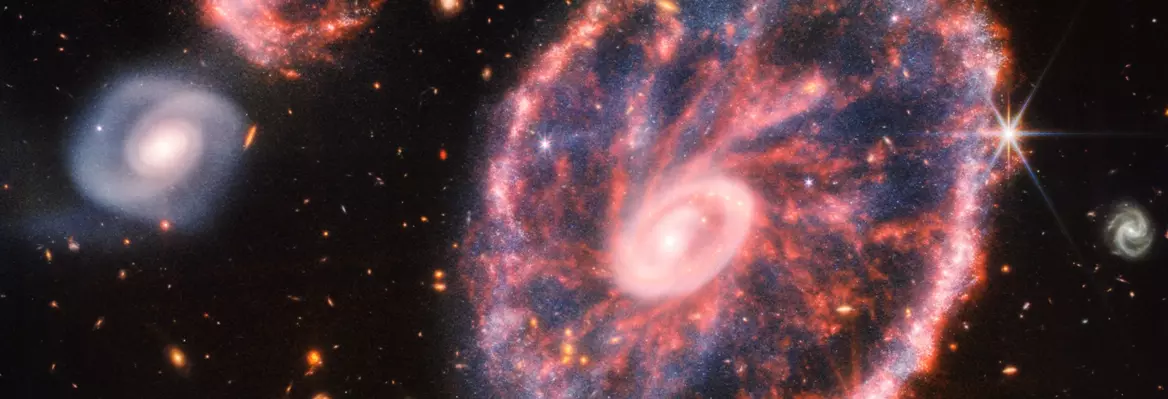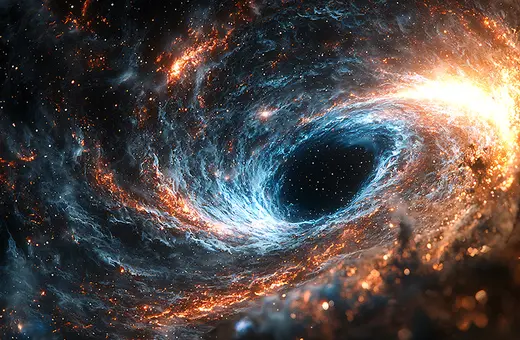With evidence mounting against the standard model of cosmology, Modified Newtonian Dynamics, or MOND, is the strongest contender. But in a recent iai News article, Idranil Banik argued that new research into wide binary stars falsifies MOND. Here, Pavel Kroupa and Jan Pflamm-Altenburg argue that data around wide binary stars are beset by uncertainty, bringing into question what, if anything, can be determined from them at the present – and ask whether a single test, even if carried out to the highest confidence, is sufficient to falsify an otherwise successful theory.
There is increasing evidence that Newton's universal law of gravitation does not work for astronomical systems. The leading contender for a better theory that has made remarkable predictions and has been shown to naturally account for a large range of astronomical observations is Milgromian dynamics, or MOND. In a recent iai News article, Indranil Banik argues that MOND is wrong, based on predicting forces in wide binary stars. These are systems of two paired stars gravitationally bound in a distant orbit around one another. But the quality of data we have for wide binary stars is unreliable – is it therefore fair to throw out MOND, which otherwise works better than Newtonian gravitation, solely on this basis? And how much can we infer from one single test, even if that test appears to have high validity?
MOND stands for Modified Newtonian Dynamics and was developed by Mordehai Milgrom in 1983. By modifying Newton’s second law, MOND can extend Newton’s theory of gravity to more distant regions in space than those Newton and Einstein could observe. It offers an alternative to dark matter in seeking to explain the failure of Newtonian physics in describing galaxies.
 SUGGESTED READING
A new particle won't solve dark matter
By Melvin Vopson
SUGGESTED READING
A new particle won't solve dark matter
By Melvin Vopson
The motion of two stars around each other in a very wide binary system can be used to test between Newton's and Milgrom's theories [1]. These wide binary stars are 2000-10000 astronomical units apart – or 2000-10000 times the distance between Earth and the Sun – with orbital times between 100000 and 1 million years. Wide binary stars are a significant test of gravitational theory because any deviation they make from Newton's law cannot be explained by dark matter, since dark matter cannot attach itself to stars that, like those in wide binary systems, have too feeble a gravitational pull. According to the widely used mathematical formulations of Milgromian gravitation, AQUAL and QUMOND, the velocity differences between the two stars in many wide binary systems should statistically be about 20% larger than expected from Newtonian gravitation.
___
Frankly, entertaining the possibility that standard model is valid has become rather unscientific. We therefore need to develop a new model.
___
On the 21st of November 2023 Indranil Banik from St. Andrews University published an iai article, based on his recent paper linked below [2], in which he argues that MOND is wrong. Banik et al. report that Newtonian gravitation works better than Milgromian gravitation, but they do not quantify if the data they rely on is consistent with Newtonian gravitation. Two other independent teams, around Xavier Hernandez [3,4] from Mexico City and Kyu-Hyun Chae [5,6] from Seoul use similar data, but unlike Banik et al., they come out strongly in favour of Milgromian gravitation instead. These disagreements inspired our team in Bonn to investigate the Milgromian problem in which a few stars orbit about each other.





















Join the conversation